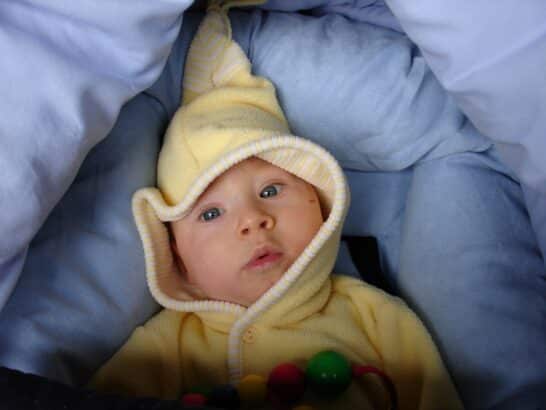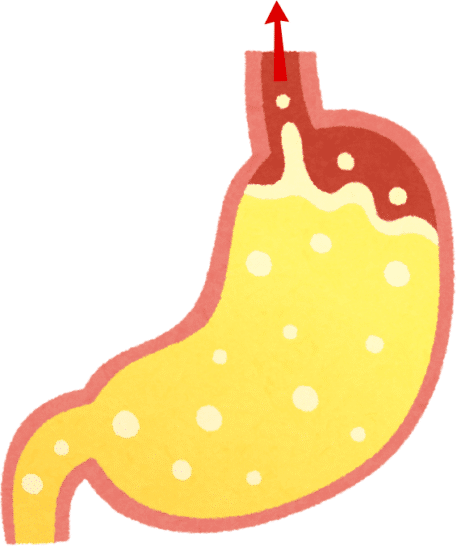Epilepsy means that the brain or individual areas of the brain are overactive and send out too many signals. This can be detected by means of an electroencephalogram (EEG, recording of brain waves).
The overactivity leads to epileptic seizures, which may result in isolated muscle twitches, but can also lead to convulsions of the whole body and loss of consciousness.
Seizures can be divided into generalized (the entire brain is affected) and focal seizures (only individual areas of the brain are affected).
Generalized seizures can manifest themselves, for example, as tonic seizures (severe cramping), atonic seizures (sudden loss of muscle tone) or absence seizures (sudden loss of consciousness). So-called grand mal seizures are also classified as generalized seizures and may consist of both tonic and clonic (twitching, repetitive movements) components.
Epileptic seizures can also manifest themselves solely in the form of respiratory arrest or facial twitching.
The term status epilepticus refers to an epileptic seizure that either lasts for an unusually long time (longer than 5 minutes) or a series of seizures between which consciousness is not regained.
The Situation With PCH2 Children
Epileptic seizures (convulsions) are common in children with PCH2. They are considered one of the main symptoms of PCH2. The types of seizures in PCH2 vary greatly. In addition to generalized tonic-clonic seizures, absences or atonic seizures can also occur. Seizures have also been described during fevers. This is because fever lowers the seizure threshold in children with epilepsy. Status epilepticus also occurs more frequently in children with PCH2.
An increased frequency of seizures in PCH2 children may be an indication of an impending infection. Parents also often report a change in the frequency or type of seizures during phases of developmental change.
The probability of developing seizures is very high for children with PCH2 and increases with age.
Therapy
The treatment of epileptic seizures in PCH2 is difficult and only rarely leads to a complete cessation of seizures. Nevertheless, it is essential to attempt to manage the epilepsy as best as possible, as this not only has a direct impact on the well-being of the children and their families, but in many cases also allows for progress in other areas (such as cognitive and motor development, care, fun experiences, etc.).
In the 2014 natural history study, treatment with phenobarbital and topiramate proved to be the most successful. When asked directly about this, numerous parents mentioned phenobarbital as one of the most beneficial drugs for their children, with hardly any side effects being observed.
Phenobarbital is one of the first and therefore best known seizure suppressant drugs. It has sedative and sleep-inducing properties, and it also causes other drugs to be broken down more quickly and can therefore interfere with their effects (e.g. valproate or thyroid hormones). If phenobarbital needs to be discontinued, this must be done very slowly.
Based on the many reports from parents and the two natural history studies, children with PCH2 often benefit from taking phenobarbital (as well as topiramate), so that early treatment with these drugs can be considered as part of antiepileptic therapy.
Tips to Try Out
- Ensure sufficient daily fluid intake.
- Reduce fever early and adequately.
- Aim for optimal management with anti-epileptic medication This requires patience and perseverance, as it is often a lengthy process.
Scientific Background
Data From Literature
- Barth et al. (1990) described grand mal seizures in 3 cases.
- In Steinlin et al. (2007), almost half of the children described (14/21) had seizures.
- Namavar et al. (2011) reported that in a group of 54 children with the mutation typical of PCH2, 44 children had seizures. Namavar et al. stated that the probability of developing seizures increased with the increasing age of the children.
Natural History Study from 2014
There was a high prevalence of epileptic seizures (26 out of 33 children). The average age of seizure onset was 29 months. All children who did not have seizures during this study were 28 months or younger. The cessation of seizures was described in 3 children. In 2 cases, this was associated with long-term antiepileptic therapy, although a conclusively successful therapy for seizures in PCH2 is not known. However, phenobarbital (successful in 11 of 15 cases) and topiramate (successful in 6 of 7 cases) proved to be effective drugs at reducing seizures. Clobazam and levetiracetam were either found to be ineffective or associated with too many side effects.
Status epilepticus occurred in 13 of 33 children. Most of these children (9) had only had status epilepticus once by the time of data collection. The age distribution ranged from 3 months to 12 years at the time of the first or only status epilepticus. In 5 out of 13 children, it was not possible to interrupt the status epilepticus with medication; in the other cases, diazepam (2/13) or a combination of diazepam with phenobarbital, clonazepam, chloral hydrate or lorazepam was successful in ending the status epilepticus. Midazolam was reported to be effective in one case.
Natural History Study from 2023
Epileptic seizures occurred in 43 of 62 children. The average age at first onset was 2 years. In the majority of children affected by epileptic seizures, these were persistent, while in 5 children no more epileptic seizures occurred in the course of the study.
One third of the children had already experienced at least one status epilepticus. On average, the children with status epilepticus had already experienced 2.25 status epilepticus seizures in their lifetime and had received intensive medical treatment for an average of one status epilepticus seizure.
The probability of developing epilepsy increased with age.
Slightly more than half of the children had febrile seizures, on average for the first time from the age of around 22 months.
Almost 90% of the children affected by epileptic seizures received long-term medication to treat the seizures. In the majority of cases, the occurrence of seizures was reported to have at least halved under medication.
This entry was written to the best of our knowledge based on the reported experiences of parents of affected children. In addition, currently available data from the 2014 and 2023 Natural History Studies of PCH2 and from general medical literature has been included. It is not a substitute for consulting a medical professional. PCH2cure assumes no liability in this respect.
- Barth P G, Vrensen G F J M, Uylings H B M, Oorthuys J W E, Stam F C (1990) Inherited syndrome of microcephaly, dyskinesia and pontocerebellar hypoplasia: a systemic atrophy with early onset. J Neurol Sci 97: 25-42
- Namavar Y, Barth P G, Kasher P R, van Ruissen F, Brockmann K, Bernert G, Writzl K, Ventura K, Cheng E Y, Ferriero D M, Basel-Vanagaite L, Eggens V R, Krägeloh-Mann I, De Meirleir L, King M, Graham J M, Jr., von Moers A, Knoers N, Sztriha L, Korinthenberg R, Dobyns W B, Baas F, Poll-The B T (2011) Clinical, neuroradiological and genetic findings in pontocerebellar hypoplasia. Brain 134(Pt 1): 143-156
- Steinlin M, Klein A, Haas-Lude K, Zafeiriou D, Strozzi S, Müller T, Gubser-Mercati D, Schmitt Mechelke T, Krägeloh-Mann I, Boltshauser E (2007) Pontocerebellar hypoplasia type 2: variability in clinical and imaging findings. Eur J Paediatr Neurol 11 (3): 146-152
- Natural History Study from 2014: Frölich S. Natürlicher Verlauf der Pontocerebellären Hypoplasie Typ 2 [Inauguraldissertation zur Erlangung des Doktorgrades der Medizin] Tübingen: Eberhard-Karls-Universität; 2014
- Natural History Study from 2023: Kuhn A L. Gastrointestinale Symptome, Ernährung und Gedeihen bei Pontocerebellärer Hypoplasie Typ 2 A [Inauguraldissertation zur Erlangung des Doktorgrades der Medizin] Freiburg im Breisgau: Albert-Ludwigs-Universität; 2023


